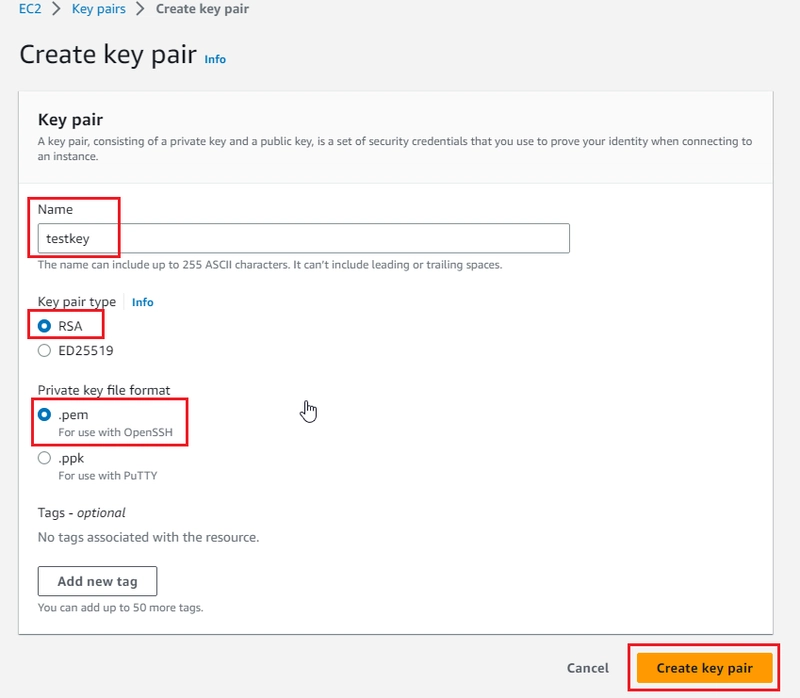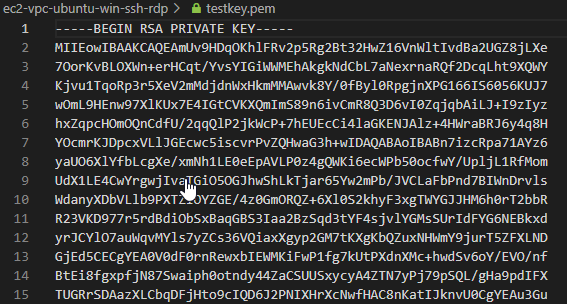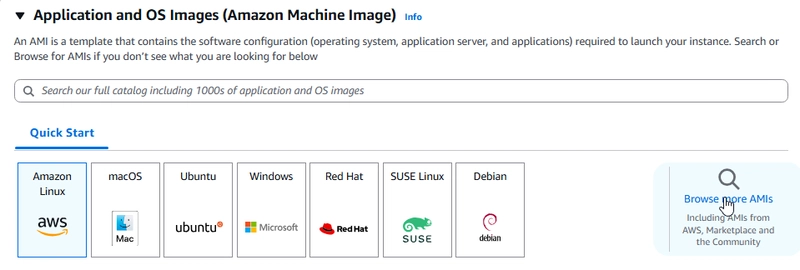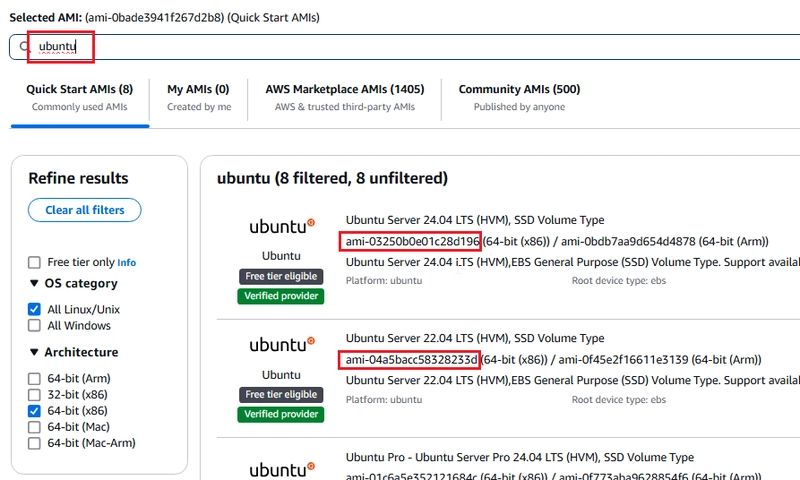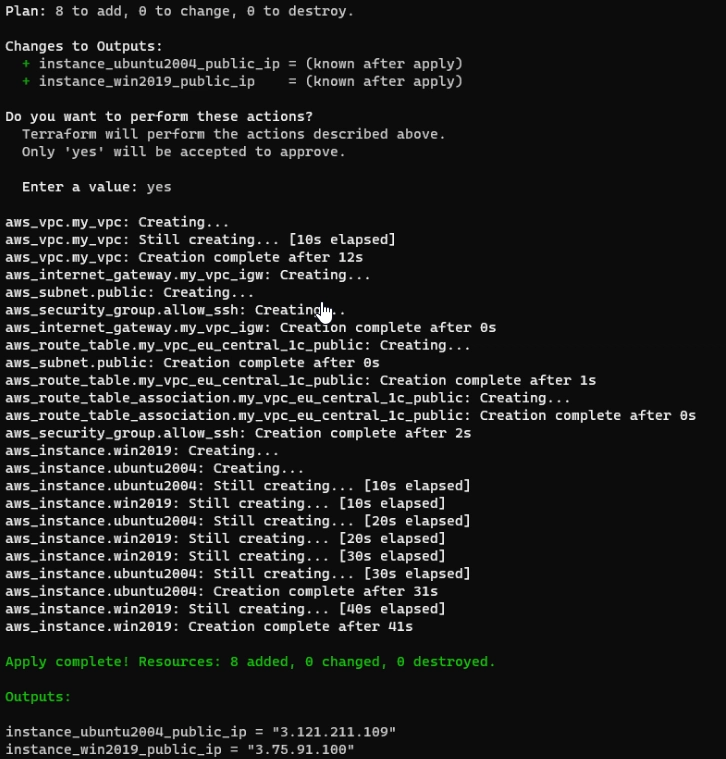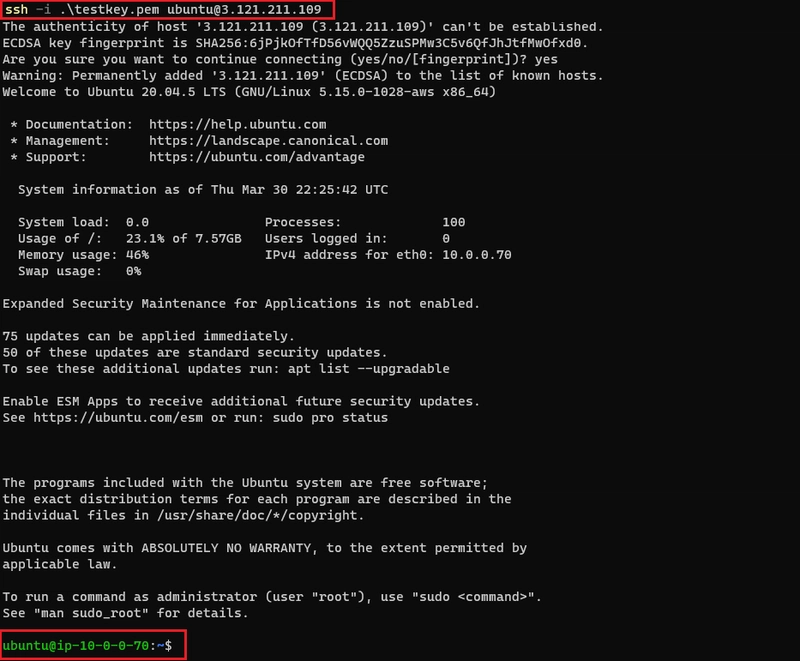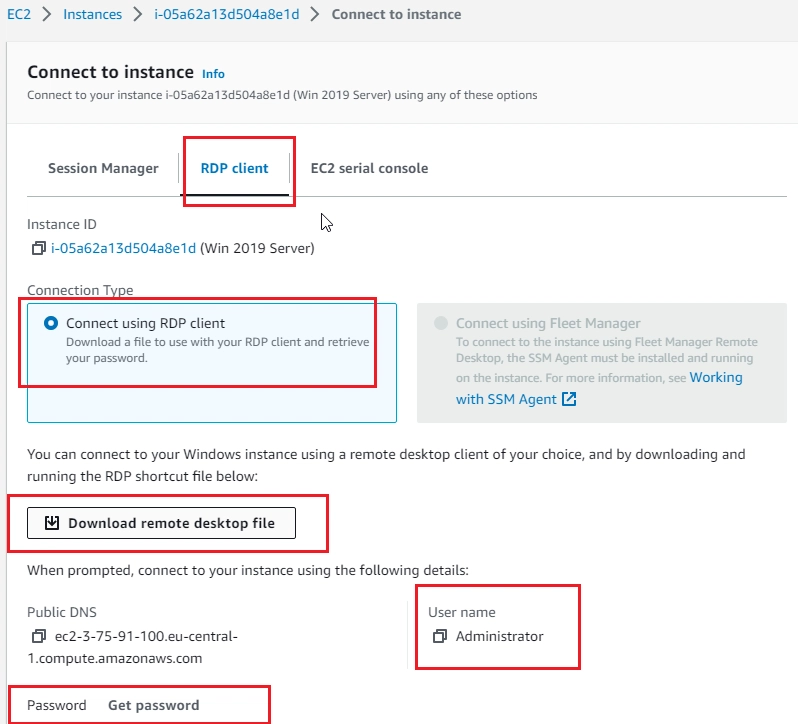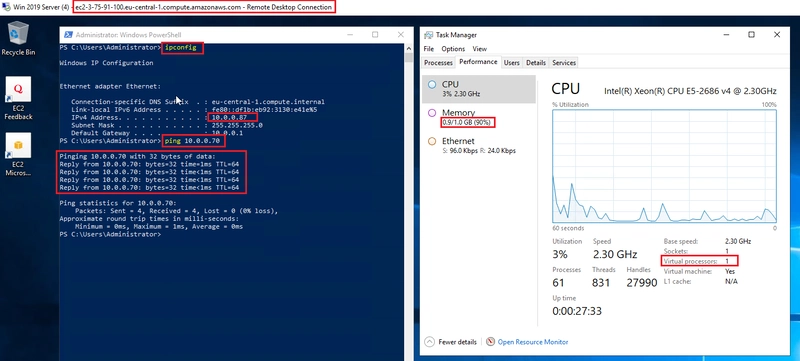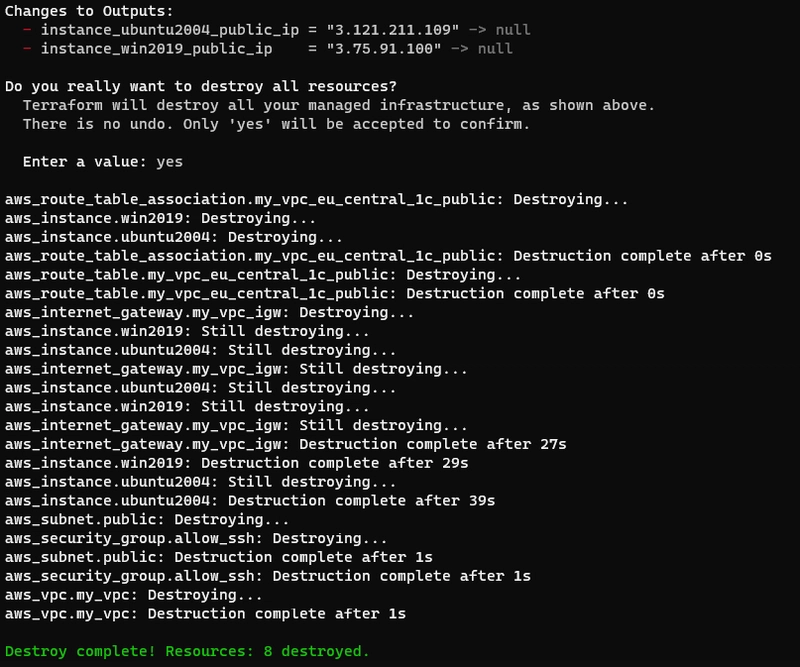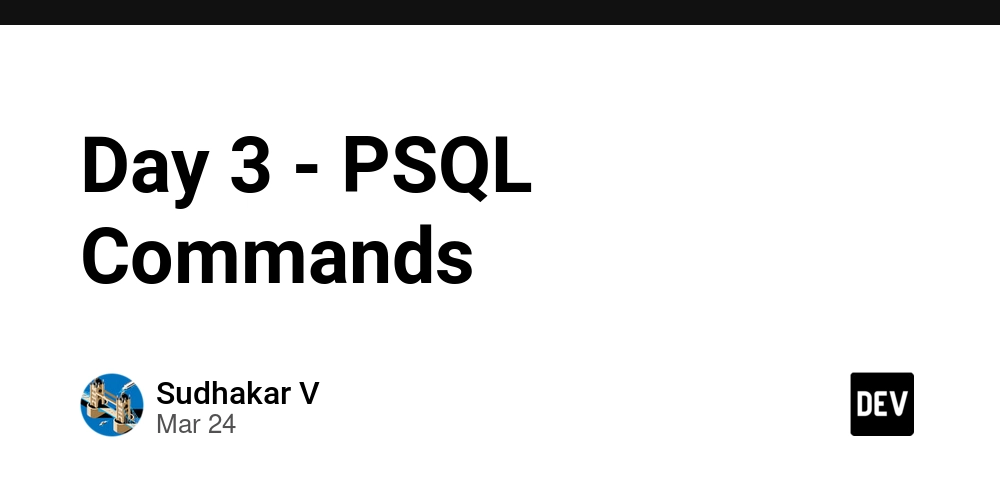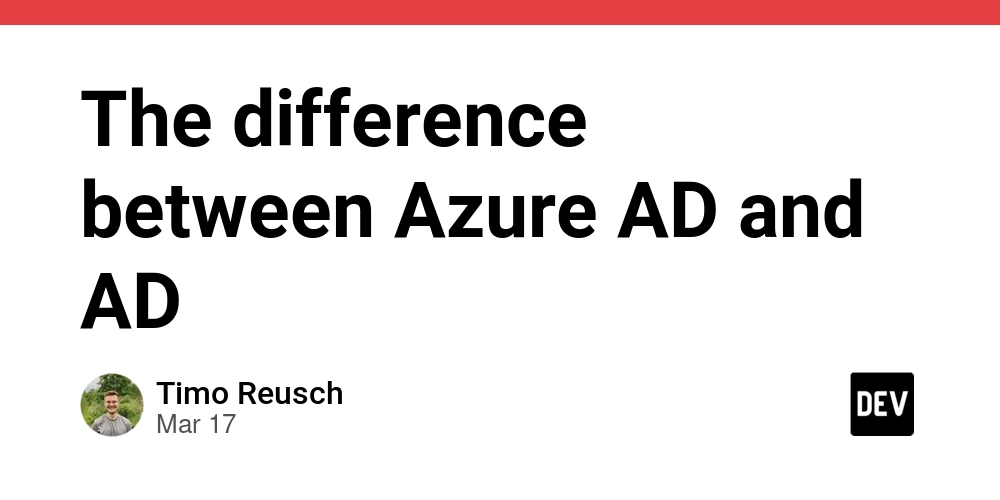Why Learn Cloud/AWS? Provisioning AWS EC2s in VPC using Terraform with Hands-on Sample ☁️
Mastering AWS and Infrastructure as Code (IaC) tools like Terraform/OpenTofuunlocks endless opportunities in modern cloud computing. Whether you aim to advance your career, optimize cloud operations, or innovate with cutting-edge technologies, cloud skills are an invaluable asset in today’s tech-driven world. Motivation: Where Do Cloud Skills Help Us? Cloud expertise extends beyond IT professionals, it's valuable across various domains: DevOps & SRE Roles: Automating infrastructure, CI/CD pipelines, and monitoring applications. Software Development: Deploying, scaling, and managing cloud-native applications. Data Science & AI/ML: Leveraging cloud-based data lakes, analytics, and AI services. Cybersecurity & Compliance: Securing cloud resources and ensuring regulatory compliance. Enterprise IT & Digital Transformation: Driving business innovation with cloud-first strategies. Freelancers & Entrepreneurs: Hosting applications, automating deployments, and reducing operational costs. Why Learn to Provision with Terraform/OpenTofu? As cloud environments grow more complex, managing infrastructure manually becomes inefficient and error-prone. Infrastructure as Code (IaC) tools like Terraform and OpenTofu simpfly cloud provisioning, making infrastructure deployment reproducible, scalable, and automated. What are EC2, VPC, Subnet, Route Table, IGW, SG, Key Pairs? AWS Elastic Compute Cloud (EC2): EC2 is a web service that provides scalable, on-demand virtual servers in the cloud (virtual machines). It enables users to run applications, host websites, and process workloads without needing physical hardware, offering flexibility, security, and cost-effective computing power. AWS Virtual Private Cloud (VPC): VPC is a secure, isolated network within AWS that allows users to define and control their cloud networking environment. It enables custom IP ranges, subnets, routing, and security settings to securely connect AWS resources to the internet or on-premises networks. VPC Subnets: Logical subdivisions within a VPC that help organize and isolate resources. Subnets can be public (internet-accessible) or private (internal-only). Route Table: A set of rules that determinehow network traffic is directed within a VPC. It controls communication between subnets, the internet, and on-premises networks. Internet Gateway (IGW): A component that enables communication between AWS resources in a VPC and the public internet, allowing public-facing applications to function. Key Pairs: A cryptographic authentication mechanism (public & private keys) used to securely connect to EC2 instances via SSH or RDP. AWS Security Groups (SG): Virtual firewalls that control inbound and outbound traffic for AWS resources, such as EC2 instances. Hands-on Sample This sample shows: how to create Key-pairs (public and private keys) on AWS. how to create EC2s (Ubuntu 20.04, Windows 2019 Server). how to create Virtual Private Cloud (VPC), VPC Components (Public Subnet, Internet Gateway, Route Table) and link to each others. how to create Security Groups (for SSH and Remote Desktop). Code: https://github.com/omerbsezer/Fast-AWS/blob/main/hands-out-labs-code/hands-on-001-ec2-vpc-connect-ec2/main.tf Steps SSH key-pairs (public and private key) are used to connect remote server. Public key (xx.pub) is on the remote server, with private key, user can connect using SSH. There are 2 ways of creating key-pairs (public and private key): Creating them on cloud (AWS) EC2 > Key-pairs > Create Key-Pair Creating them on on-premise "ssh-keygen -t rsa -b 2048" Creating key-pairs on AWS: Go to EC2 > Key-pairs After creating key-pairs, public key will be listed on AWS. Private key (testkey.pem) should be downloaded on your PC. Copy this testkey.pem into your directory on which main.tf exists. Create main.tf under count directory and copy the code: # main.tf terraform { required_providers { aws = { source = "hashicorp/aws" version = "~> 5.81.0" } } required_version = ">= 1.2.0" } provider "aws" { region = "eu-central-1" } resource "aws_vpc" "my_vpc" { cidr_block = "10.0.0.0/16" enable_dns_hostnames = true tags = { Name = "My VPC" } } resource "aws_subnet" "public" { vpc_id = aws_vpc.my_vpc.id cidr_block = "10.0.0.0/24" availability_zone = "eu-central-1c" tags = { Name = "Public Subnet" } } resource "aws_internet_gateway" "my_vpc_igw" { vpc_id = aws_vpc.my_vpc.id tags = { Name = "My VPC - Internet Gateway" } } resource "aws_route_table" "my_vpc_eu_central_1c_public" { vpc_id = aws_vpc.my_vpc.id route { cidr_block = "0.0.0.0/0" gateway_id = aws_internet_gateway.my_vpc_igw.id } tags = { Name = "Public Subnet Route Table" } } resource "aws_route_table_association" "my_vpc_eu_central_1c_public" { subnet_id = aws_subnet.p
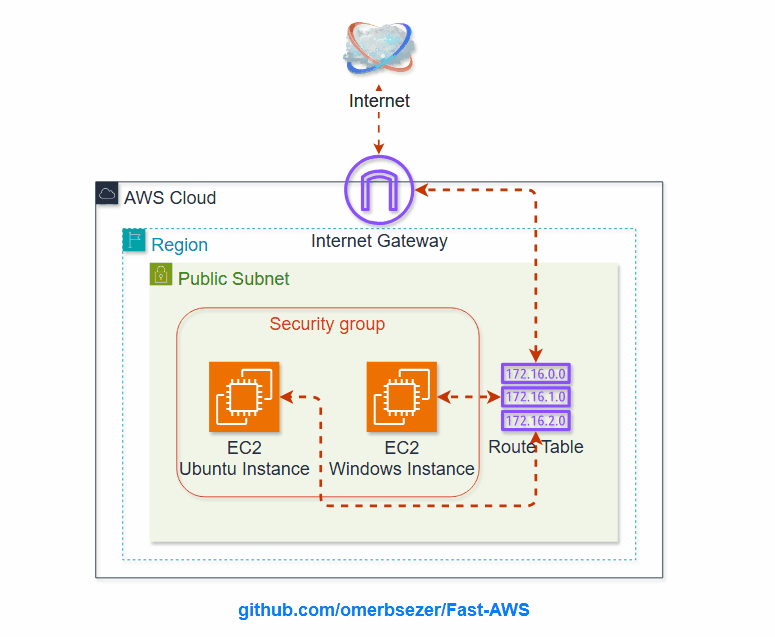
Mastering AWS and Infrastructure as Code (IaC) tools like Terraform/OpenTofuunlocks endless opportunities in modern cloud computing. Whether you aim to advance your career, optimize cloud operations, or innovate with cutting-edge technologies, cloud skills are an invaluable asset in today’s tech-driven world.
Motivation: Where Do Cloud Skills Help Us?
Cloud expertise extends beyond IT professionals, it's valuable across various domains:
- DevOps & SRE Roles: Automating infrastructure, CI/CD pipelines, and monitoring applications.
- Software Development: Deploying, scaling, and managing cloud-native applications.
- Data Science & AI/ML: Leveraging cloud-based data lakes, analytics, and AI services.
- Cybersecurity & Compliance: Securing cloud resources and ensuring regulatory compliance.
- Enterprise IT & Digital Transformation: Driving business innovation with cloud-first strategies.
- Freelancers & Entrepreneurs: Hosting applications, automating deployments, and reducing operational costs.
Why Learn to Provision with Terraform/OpenTofu?
As cloud environments grow more complex, managing infrastructure manually becomes inefficient and error-prone. Infrastructure as Code (IaC) tools like Terraform and OpenTofu simpfly cloud provisioning, making infrastructure deployment reproducible, scalable, and automated.
What are EC2, VPC, Subnet, Route Table, IGW, SG, Key Pairs?
-
AWS Elastic Compute Cloud (EC2): EC2 is a web service that provides scalable, on-demand
virtual serversin the cloud (virtual machines). It enables users to run applications, host websites, and process workloads without needing physical hardware, offering flexibility, security, and cost-effective computing power. -
AWS Virtual Private Cloud (VPC): VPC is a secure, isolated network within AWS that allows users to define and
control their cloud networkingenvironment. It enables customIP ranges, subnets, routing, and security settingsto securely connect AWS resources to the internet or on-premises networks. -
VPC Subnets:
Logical subdivisions within a VPCthat help organize and isolate resources. Subnets can be public (internet-accessible) or private (internal-only). -
Route Table: A set of rules that determine
how network traffic is directed within a VPC. It controls communication between subnets, the internet, and on-premises networks. -
Internet Gateway (IGW): A component that
enables communication between AWS resources in a VPC and the public internet, allowing public-facing applications to function. -
Key Pairs: A cryptographic
authentication mechanism(public & private keys) used to securely connect to EC2 instances via SSH or RDP. -
AWS Security Groups (SG):
Virtual firewallsthat control inbound and outbound traffic for AWS resources, such as EC2 instances.
Hands-on Sample
This sample shows:
- how to create Key-pairs (public and private keys) on AWS.
- how to create EC2s (Ubuntu 20.04, Windows 2019 Server).
- how to create Virtual Private Cloud (VPC), VPC Components (Public Subnet, Internet Gateway, Route Table) and link to each others.
- how to create Security Groups (for SSH and Remote Desktop).
Steps
SSH key-pairs (public and private key) are used to connect remote server. Public key (xx.pub) is on the remote server, with private key, user can connect using SSH.
-
There are 2 ways of creating key-pairs (public and private key):
- Creating them on cloud (AWS)
- EC2 > Key-pairs > Create Key-Pair
- Creating them on on-premise
- "ssh-keygen -t rsa -b 2048"
Creating key-pairs on AWS: Go to EC2 > Key-pairs
- After creating key-pairs, public key will be listed on AWS. Private key (testkey.pem) should be downloaded on your PC. Copy this testkey.pem into your directory on which main.tf exists.
- Create main.tf under count directory and copy the code:
# main.tf
terraform {
required_providers {
aws = {
source = "hashicorp/aws"
version = "~> 5.81.0"
}
}
required_version = ">= 1.2.0"
}
provider "aws" {
region = "eu-central-1"
}
resource "aws_vpc" "my_vpc" {
cidr_block = "10.0.0.0/16"
enable_dns_hostnames = true
tags = {
Name = "My VPC"
}
}
resource "aws_subnet" "public" {
vpc_id = aws_vpc.my_vpc.id
cidr_block = "10.0.0.0/24"
availability_zone = "eu-central-1c"
tags = {
Name = "Public Subnet"
}
}
resource "aws_internet_gateway" "my_vpc_igw" {
vpc_id = aws_vpc.my_vpc.id
tags = {
Name = "My VPC - Internet Gateway"
}
}
resource "aws_route_table" "my_vpc_eu_central_1c_public" {
vpc_id = aws_vpc.my_vpc.id
route {
cidr_block = "0.0.0.0/0"
gateway_id = aws_internet_gateway.my_vpc_igw.id
}
tags = {
Name = "Public Subnet Route Table"
}
}
resource "aws_route_table_association" "my_vpc_eu_central_1c_public" {
subnet_id = aws_subnet.public.id
route_table_id = aws_route_table.my_vpc_eu_central_1c_public.id
}
resource "aws_security_group" "allow_ssh" {
name = "allow_ssh_sg"
description = "Allow SSH inbound connections"
vpc_id = aws_vpc.my_vpc.id
# for SSH
ingress {
from_port = 22
to_port = 22
protocol = "tcp"
cidr_blocks = ["0.0.0.0/0"]
}
# for HTTP Apache Server
ingress {
from_port = 80
to_port = 80
protocol = "tcp"
cidr_blocks = ["0.0.0.0/0"]
}
# for RDP
ingress {
from_port = 3389
to_port = 3389
protocol = "tcp"
cidr_blocks = ["0.0.0.0/0"]
}
# for ping
ingress {
from_port = -1
to_port = -1
protocol = "icmp"
cidr_blocks = ["10.0.0.0/16"]
}
egress {
from_port = 0
to_port = 0
protocol = "-1"
cidr_blocks = ["0.0.0.0/0"]
}
tags = {
Name = "allow_ssh_sg"
}
}
resource "aws_instance" "ubuntu2004" {
ami = "ami-0e067cc8a2b58de59" # Ubuntu 20.04 eu-central-1 Frankfurt, you can also select newer version from AWS Console, shown below
instance_type = "t2.nano"
key_name = "testkey"
vpc_security_group_ids = [aws_security_group.allow_ssh.id]
subnet_id = aws_subnet.public.id
associate_public_ip_address = true
user_data = <<-EOF
#! /bin/bash
sudo apt-get update
sudo apt-get install -y apache2
sudo systemctl start apache2
sudo systemctl enable apache2
echo "Deployed via Terraform from $(hostname -f)
" | sudo tee /var/www/html/index.html
EOF
tags = {
Name = "Ubuntu 20.04"
}
}
resource "aws_instance" "win2019" {
ami = "ami-02c2da541ae36c6fc" # Windows 2019 Server eu-central-1 Frankfurt, you can also select newer version from AWS Console, shown below
instance_type = "t2.micro"
key_name = "testkey"
vpc_security_group_ids = [aws_security_group.allow_ssh.id]
subnet_id = aws_subnet.public.id
associate_public_ip_address = true
tags = {
Name = "Win 2019 Server"
}
}
output "instance_ubuntu2004_public_ip" {
value = "${aws_instance.ubuntu2004.public_ip}"
}
output "instance_win2019_public_ip" {
value = "${aws_instance.win2019.public_ip}"
}
- Note: You can change the AMI from EC2 > Launch Instance
- These AMI IDs vary depends on the region. Following image shows the region
eu-central-1, Ubuntu AMIs.
- Run init command:
terraform init
- Validate file:
terraform validate
- Run plan command:
terraform plan
- Run apply command to create resources. Then, Terraform asks to confirm, write "yes":
terraform apply
- On AWS EC2 > Instances, Ubuntu 20.04, Window 2019 Server:
- Security groups (SSG), for SSH (port 22), RDP (port 3389), HTTP (80), ICMP (for ping) for Inbound rules:
- Storage, Elastic Block Storage default:
- On AWS VPC (Virtual Private Cloud) Service:
- While installing Ubuntu20.04, userdata is used to install Apache Server on it. With SSG Port 80, using public IP, we can see the index.html, like hosting server:
- SSH to Ubuntu 20.04 (ssh -i testkey.pem ubuntu@):
- Run:
sudo apt install net-tools
ifconfig
- Private IP can be seen:
- Make remote connection to Windows (RDP):
- Download RDP App, to get password, upload testkey.pem file:
- Now, we reach Windows using RDP, pinging to Ubuntu20.04 from Windows:
- Destroy infrastructure:
terraform destroy
- Be sure that instances are terminated. Because if they works, it costs money.
Conclusion
In this post, we mentioned:
- why should we learn Cloud/AWS, IaC/Terraform,
- how to provision AWS EC2, VPC, IGW, Route Table, SG,
- how to access Ubuntu and Windows EC2s.
If you found the tutorial interesting, I’d love to hear your thoughts in the blog post comments. Feel free to share your reactions or leave a comment. I truly value your input and engagement












































































































































































![[The AI Show Episode 142]: ChatGPT’s New Image Generator, Studio Ghibli Craze and Backlash, Gemini 2.5, OpenAI Academy, 4o Updates, Vibe Marketing & xAI Acquires X](https://www.marketingaiinstitute.com/hubfs/ep%20142%20cover.png)



























































































































![[DEALS] The Premium Learn to Code Certification Bundle (97% off) & Other Deals Up To 98% Off – Offers End Soon!](https://www.javacodegeeks.com/wp-content/uploads/2012/12/jcg-logo.jpg)


![From drop-out to software architect with Jason Lengstorf [Podcast #167]](https://cdn.hashnode.com/res/hashnode/image/upload/v1743796461357/f3d19cd7-e6f5-4d7c-8bfc-eb974bc8da68.png?#)









































































































.png?#)

































_Christophe_Coat_Alamy.jpg?#)
 (1).webp?#)




































































































![iPhone 17 Pro Won't Feature Two-Toned Back [Gurman]](https://www.iclarified.com/images/news/96944/96944/96944-640.jpg)
![Tariffs Threaten Apple's $999 iPhone Price Point in the U.S. [Gurman]](https://www.iclarified.com/images/news/96943/96943/96943-640.jpg)


































































































































